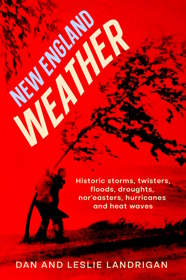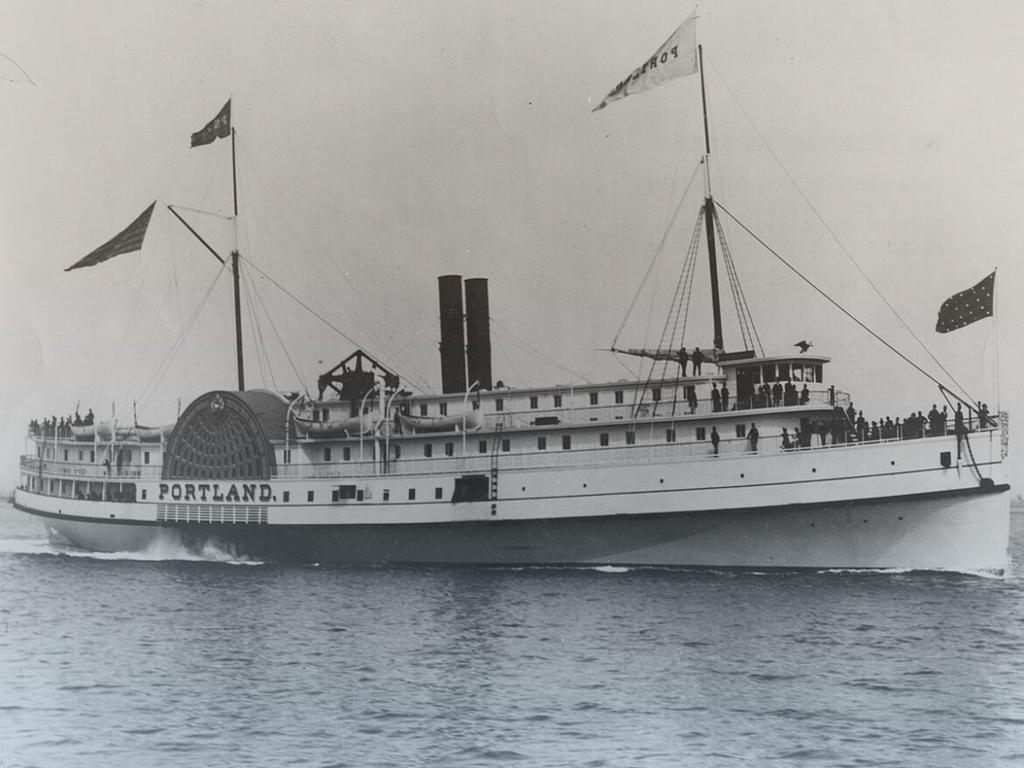Of all the storms that struck New England over the centuries, only one was named after its victim: The Portland Gale of Nov. 26, 1898.
The monumental double storm killed more than 400 people and sank 150 vessels, including the steamship Portland in the worst marine tragedy of the 19th century.
It created a storm surge of 10 feet in Cohasset Harbor, blocked a harbor for months on Martha’s Vineyard and changed the course of the North River in Scituate. It deposited so much water in Boston that people rowed dories on Atlantic Avenue.
Sailing master Joseph Kemp compared the Portland Gale to the Great Hurricane of 1938.
Lt. Worth G. Ross, a life-saving station inspector, also witnessed the storm. “The wild fury of the wind and driving snow continued without abatement until late in the afternoon,” he wrote. “At times the force and roar of the tempest were so appalling as to be indescribable.”
The Portland Gale
Two low pressure masses headed toward New England on the Saturday after Thanksgiving. One came from the Great Lakes, the other from the Gulf of Mexico. The weather service only predicted the storm from the Midwest would strike New England. Had it noticed the two would merge, hundreds of lives might have been saved.
The S.S. Portland, a 280-foot wooden sidewheeler, was moored at Indian Wharf in Boston on Nov. 26, the Saturday after Thanksgiving. Many passengers were returning home after visiting family from as far away as Philadelphia and New York.
Though the skies were clear that afternoon in Boston, they developed an ominous yellow light late in the day. “It was the greasiest evening you ever saw,” Kemp remembered.
Capt. Hollis Blanchard, the Portland’s skipper, went ashore as freight was loaded aboard the steamship. He called the captain of the Portland’s sister ship, the Bay State. Knowing only of the one storm headed his way, he said he would beat it before it reached Portland.
At 5:30 pm, the general manager ordered the steamship line’s vessels held until 9 pm, when the weather situation clear. Blanchard either didn’t get the message or ignored it.
A man from Brooklin, Maine, named Gott saw a cat leaving the steamer, taking her kittens down the gangway one by one. He decided the cat knew something he didn’t and got off the boat.
Sightings
At 7 pm the Portland cast off, before the sudden violent outburst of wind and snow. A number of other vessels, scurrying toward safe harbors, later reported seeing the steamship.
The Portland saluted the Kennebec and then the Mount Desert as she steamed out of Boston Harbor.
Several schooners caught sight of the Portland near Thacher’s Island off Gloucester. By then, the fierce storm had begun. At 11:45 pm, the schooner Edgar Randall nearly collided with a badly damaged steamship running without lights.
During a lull in the storm Sunday morning, the schooner Ruth M. Martin spotted the Portland off Highland Light in North Truro.
Blanchard may have headed into the storm toward open water. Over the years, fishermen recovered wreckage from her path. At some point on Sunday morning, the hull of the Portland opened up to the sea.
No one really knows what exactly happened. Some think she rammed another vessel. Some think the Portland Gale swept off her superstructure and she sunk like a stone.
Recovery
Around 7 pm on Sunday, bodies started washing up on shore halfway between the Race Point and Peaked Bars lifesaving stations. Watches on the bodies had all stopped between 9 and 10. The Portland Gale had cut off all communication between Boston and Cape Cod, and relatives began besieging the steamship line with telephone calls.
A Boston Herald reporter in Hyannis got part of a telegram from Truro, which convinced him the Portland had sunk. He left Hyannis by train and went as far as he could, but the storm had washed out coastal railroad tracks. He continued on foot, horseback and then train to Boston, where he filed the story on Tuesday and alerted the world to the Portland disaster.
The passenger list went down with the ship, so no one really knows how many died. Estimates range from 176 to 192 passengers and crew. Searchers found only 36 bodies.
Aftermath of the Portland Gale
The three-masted schooner Newburgh slammed into Union Wharf on Martha’s Vineyard and went completely through. The bow and stern stuck out of the sides, which blocked shipping to the wharves. The Bertha Glover, which carried lime, caught fire and burned in Vineyard Haven Harbor for a week. Wrecked ships littered the coast after the Portland Gale. Among those that sank were the Calvin F. Baker, the Meris H. Perry, the Albert L. Butler, the Pentagoet and the Columbia.
The Portland Gale destroyed dozens of piers and houses along the South Shore of Massachusetts. It damaged coastal railroads, severed telegraph and electric lines and destroyed the ferris wheel and roller coaster in Hull.
Provincetown got hit especially hard. It destroyed half of the town’s wharves and businesses along the shore. Afterward, lumber, wharf pilings and planks from the wharves filled the west side of the harbor. The whole mass writhed like snakes as if the surf tossed them, according to an account in the Provincetown Advocate.
The newspaper also reported that Mrs. Henry Spears “watched from her windows while men cut frozen bodies out of the Jordan L. Mott’s rigging.
“From that time on, she kept the shades drawn on every window facing the harbor.”
The Portland disaster accelerated the shift from wood to steel-hulled ships, and from sidewheels to propellers.
In 2002, Stellwagen Bank National Marine Sanctuary and the National Undersea Research Center at the University of Connecticut, located the Portland. They used data from American Underwater Search and Survey to identify her image in the Stellwagen Bank sanctuary at the mouth of Massachusetts Bay between Cape Cod and Cape Ann.
***

This story was updated in 2024.




7 comments
[…] followed in the 1890s, which caused fish prices to plummet. Then in 1898, a storm known as the Portland Gale wiped out nearly half of Ptown’s wharves and sunk 20 boats in the harbor. Businesses already […]
[…] https://newenglandhistoricalsociety.com/the-portland-gale-of-1898-and-the-cat-that-saved-a-life/ […]
[…] weekend after Thanksgiving in 1898, New England was hit with a storm so fierce it sank roughly 150 ships and killed hundreds of sailors and passengers. It was nicknamed the “Portland […]
[…] weekend after Thanksgiving in 1898, New England was hit with a storm so fierce it sank roughly 150 ships and killed hundreds of sailors and passengers. It was nicknamed the “Portland […]
[…] weekend after Thanksgiving in 1898, New England was hit with a storm so fierce it sank roughly 150 ships and killed hundreds of sailors and passengers. It was nicknamed the “Portland […]
[…] weekend after Thanksgiving in 1898, New England was hit with a storm so fierce it sank roughly 150 ships and killed hundreds of sailors and passengers. It was nicknamed the “Portland […]
[…] https://newenglandhistoricalsociety.com/the-portland-gale-of-1898-and-the-cat-that-saved-a-life/ […]
Comments are closed.